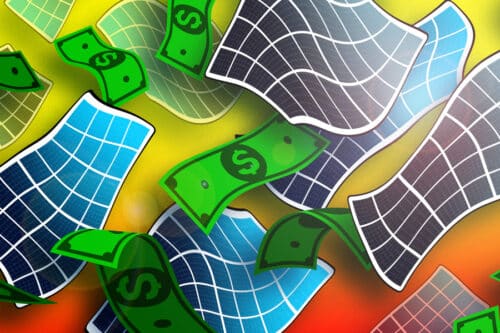A new study reveals that system deployment processes have evolved slowly, but addressing them is crucial for reducing future clean energy costs.

The cost of installing a solar energy system has decreased by over 99% since 1980. However, a recent study reveals that “soft technology” aspects, like standardized permitting, supply chain strategies, and design processes for solar energy deployment, accounted for just 10 to 15% of the overall cost reduction. The majority of savings came from advancements in hardware components.
Researchers at MIT have developed a numerical model to examine the cost trends of solar energy systems, considering both hardware and soft technology components. The framework indicates limited advancement in soft technology. Engineers could minimize their reliance on or optimize deployment processes to boost cost reductions.
The hard truth about soft costs
Researchers noted that the “soft costs” in constructing a solar power plant, such as design and installation, now account for a significant portion of the total costs, often between 35 to 64 percent. The researchers have crafted a quantitative method to trace the evolution of solar energy costs, attributing changes to specific technology features, both hardware and software. They found that hardware advancements, such as the doubling of photovoltaic module efficiency from 1980 to 2017, played a pivotal role in decreasing costs. This improvement alone led to a 17% reduction in overall system costs, with around 40% resulting from reduced soft prices due to enhanced module efficiency. The framework underscores that while hardware innovations influence various cost elements, soft technologies typically impact only a few.
Static soft technology
The researchers have applied their model across various countries, noting that soft costs differ significantly worldwide. Their analysis revealed that while global sharing of hardware technology advancements has consistently reduced costs across regions over recent decades, soft technology improvements are rarely disseminated internationally. The analysis suggests two approaches to cut soft costs: firstly, by innovating hardware that ties soft costs more to hardware variables, like designing standardized equipment that eases installation time, and secondly, by enhancing soft technology aspects directly, such as streamlining installation processes or introducing automated permitting platforms, without altering the hardware.
In the future, the team will use their quantitative model to investigate soft costs associated with other technologies, including electric vehicle charging and nuclear fission. They’re also keen on delving deeper into the potential advancements of soft technology and exploring strategies for its optimal design from the beginning.









